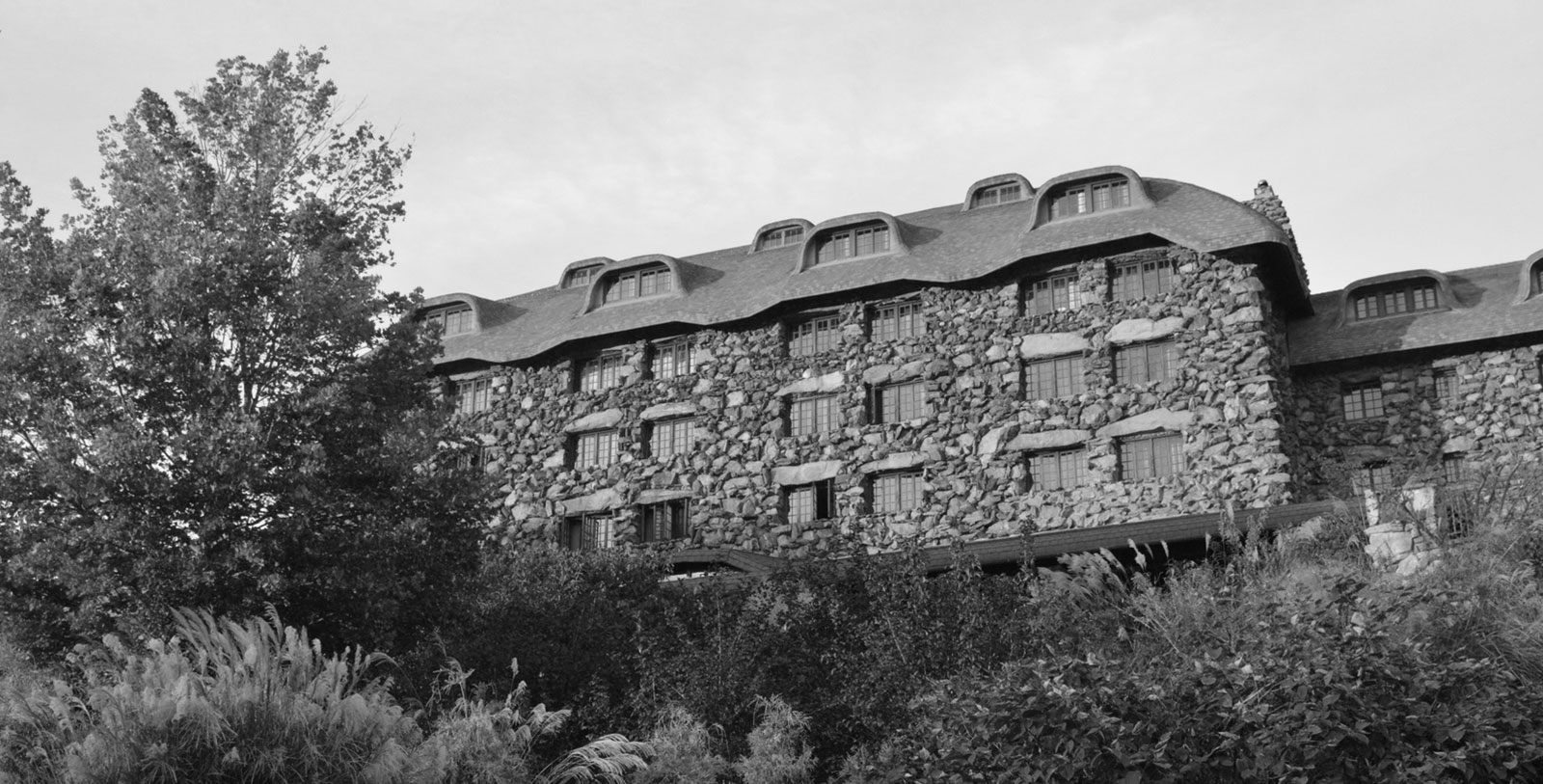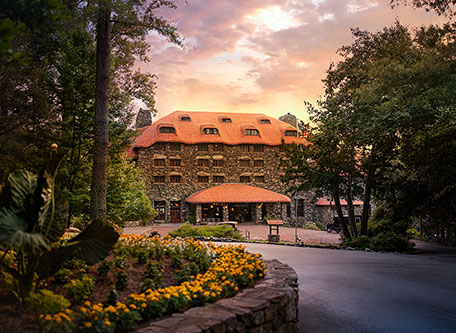Receive for Free - Discover & Explore eNewsletter monthly with advance notice of special offers, packages, and insider savings from 10% - 30% off Best Available Rates at selected hotels.
history mystery
Which historic hotel served as a secret relocation facility for the U.S. Supreme Court during the Cold War era?
During the Cold War era, threats of nuclear warfare loomed large. As a result, relocation plans for Washington’s leaders were arranged to ensure the continuity of government. Congress built the Greenbrier bunker; White House civilians took Mount Weather; the military excavated Raven Rock, and so on. But what about the Supreme Court? In the event of such an event, the justices would flee to the Blue Ridge Mountains of North Carolina, finding refuge in the historic Grove Park Inn. From this luxurious outpost, the court was to reestablish “normal court proceedings” and issue rulings on the myriad constitutional questions sure to follow.
The story behind the high court’s secret arrangement with Grove Park Inn begins in 1955 when Supreme Court clerk Harold Willey was tasked with identifying a possible relocation facility. On the advice of Lieutenant General Willard S. Paul of the Office of Defense Mobilization (ODM), Willey headed to Asheville to survey the hotel. Paul’s recommendation most likely stemmed from previous arrangements with The Grove Park Inn, which had been used by the Pentagon to accommodate Axis diplomats during the Second World War.
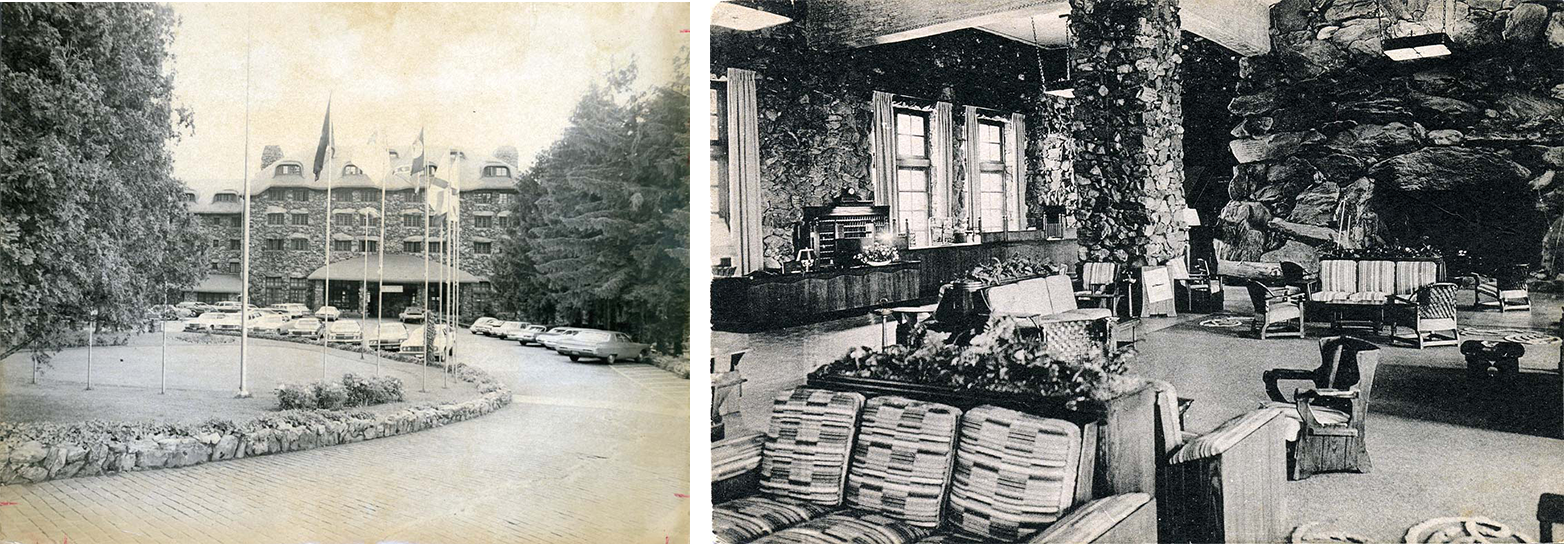 Historical images of The Grove Park Inn exterior and interior during the 1950s (courtesy of The Omni Grove Park Inn). |
Willey investigated several properties in North Carolina and reported back to Chief Justice Earl Warren in an October 1955 memorandum that “Because all large cities are considered to be prospective enemy targets, a hotel in a secluded small city, wherein approximately one hundred people could both live and work, with spaces available for a court room and clerical offices, seems a most appropriate facility for the Court.” Making the case for the 141-room Grove Park Inn, Willey added that “A golf course adjoins the Inn and the new owners … plan to build a swimming pool.”
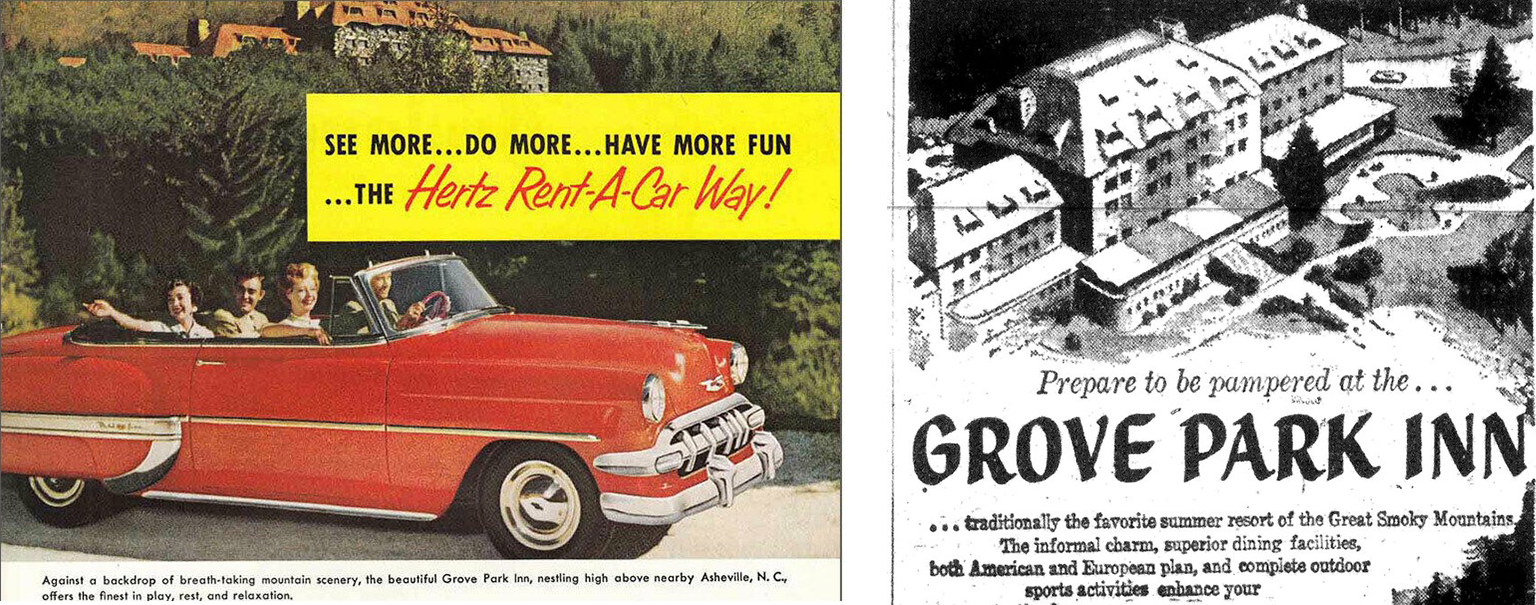 Advertisements featuring The Grove Park Inn during the 1950s - 1960s. |
The April 3, 1956, Letter of Understanding authorizes the Supreme Court "immediately to take possession of the facilities" upon enemy attack, to be followed by negotiations for a "formal lease…providing fair compensation" to the owners. The full contract can be read in its entirety here.
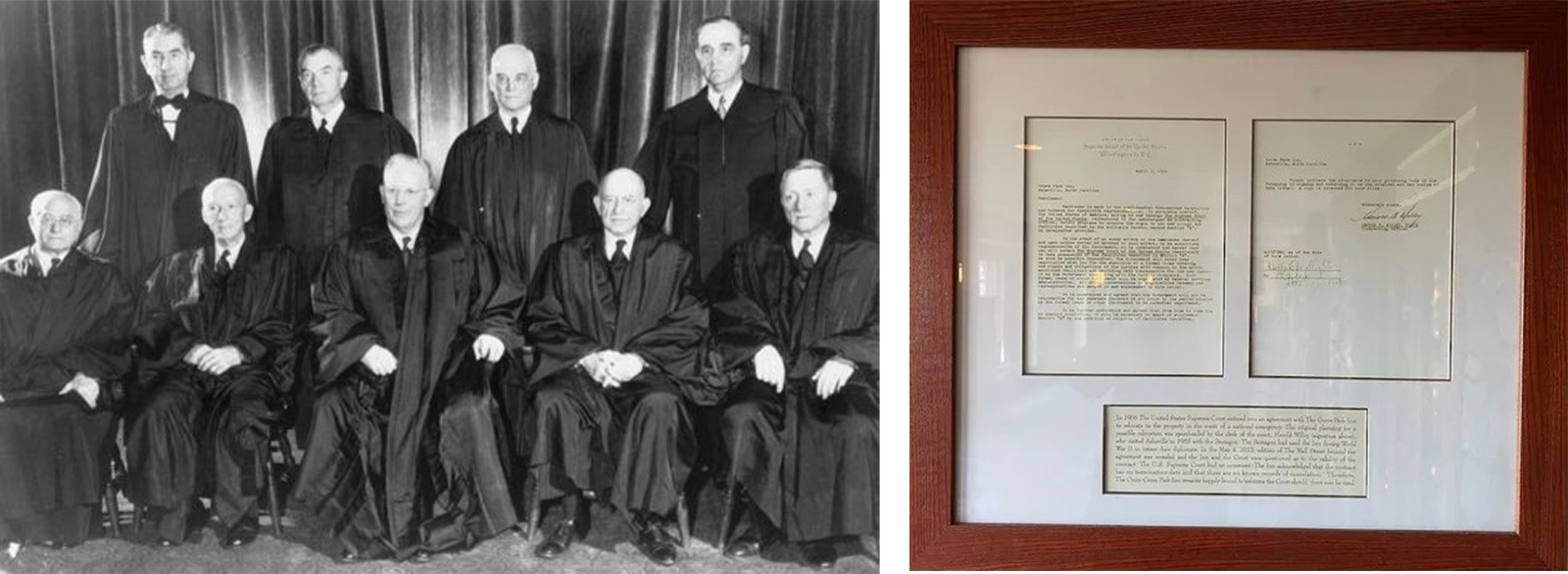 Left: U. S. Supreme Court Justices, 1953 (courtesy of Library of Congress). Right: The contract between Grove Park Inn and U.S. Supreme Court (courtesy of The Omni Grove Park Inn). |
The man who signed the agreement on behalf of the Grove Park Inn (or more technically, the Hotel Operating Company) was Edward C. Leach, Sr., the president of the Texas-based Jack Tar Hotel chain that owned the Grove Park Inn at the time. In 2013, Omni Hotels & Resorts acquired the hotel and began an extensive $25 million restoration of the entire property. Although over half a century has passed since the agreement was made, it is still legally binding to this day. The framed agreement remains on display at the hotel with a brief explanation, noting the inn “remains happily bound to welcome the Court should there ever be need.”
This has been a Historic Hotels History Mystery.
For more fun facts, trivia, and historic highlights, check out our History Mystery pages for Historic Hotels of America and Historic Hotels Worldwide. Subscribe to our newsletter below and follow us on social media to play along.






















